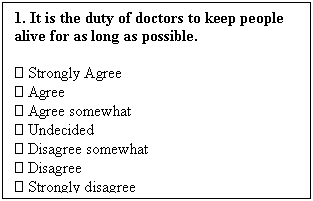Language
Our ability to communicate. Verbal language, biological in origin. Identify and discuss Broca's area (1869, speech articulation). Wernicke's area (1878, speech comprehension). Chomsky's LAD (language acquisition device).
La Piere (1934)
La Piere's classic study investigated the relationship between attitudes and behaviour. He travelled around the USA with a Chinese student and his wife and recorded how the two Chinese were treated in hotels and restaurants. On only one occasion were they treated inhospitably. Six months later La Piere sent letters to the places they had visited asking if they would accept Chinese clientele. A staggering 90% of those they previously visited replied that Chinese would not be welcome.
This discrepancy between doing one thing and saying another has plagued attitude-behavioural research. Why? One possibility is that social psychologists haven't devised sensitive enough tools to measure attitudes. Another reason is that, as with the La Piere study and others, an attempt is made to relate general attitudes e.g. to Chinese, to specific behaviour (serving two Chinese accompanied by a white American). More appropriate would be to measure specific attitudes and then try to see how they relate to specific behaviour.
Latent stage
(5-12 years) called the latent stage 'cos nothing much psychosexually happens during this time! Libido is dormant.
Likert scale
Rensis Likert (1932) developed a direct measure of attitudes called the Likert Scale. A Likert Scale adds up responses to statements representative of a particular attitude.
A Likert Scale is often used in survey design to get around the problem of obtaining meaningful quantitative answers to restricted closed questions. A Likert scale is recognisable when you are asked to indicate your strength of feeling about a particular issue on a 1-5 rating scale. Using a Likert Scale with closed questions generates statistical measurements of people's attitudes and opinions.
For example, if a social psychologist were interested in attitudes towards euthanasia, a list of say 30 statements relevant to the topic would be made up. 15 would be favourable, and 15, unfavourable. Participants would then rate each statement on a five, or (more accurately) seven-point scale as follows:

A person's attitude is the summed score from each question. If you use a Likert Scale you will have given each cell a value from 1-5, 5-1, 1-7 or 7-1. In the above Likert Scale example Strongly agree has a value of 7, Agree, 6, Agree somewhat 5, Undecided 4, Disagree somewhat 3, Disagree 2 and Strongly disagree 1. You would add up what value is associated with each of our 30 respondents answers to a particular question.
In the above a high score would indicate a favourable attitude to euthanasia, and a low score an unfavourable attitude. The advantages of a Likert scale are obvious - they are 'easy' to construct, administer and score. See the Semantic Differential Scale.
Limbic system
Part of our brain that includes the amygdala, the limbic system is associated with autonomic functions such as arousal, our motivation, our emotions, our recent memory, and our most ancient of senses, smell.
Little Albert
The nine-month-old participant in Watson & Rayner's experiment, observation, and case study Conditioned Emotional Reactions (1920). Adapting Pavlov's theory of classical conditioning they conditioned Albert over a period of seven weeks to become phobic towards a white rat The conclusion to this study is that phobias are a learned conditioned behaviour.
Little Hans
Famous case study conducted by Sigmund Freud. Click on http://www.holah.karoo.net/freudstudy.htm
( link will open in a new window. To return here close that window. )
Longitudinal
Longitudinal means long term. We often conduct longitudinal studies in psychology. To be seen as longitudinal the research would be of at least one year's duration.
Love and belongingness needs
The third of Maslow's lower order deficiency needs, these concern our inborn drive to belong to a family, peer group, gang, club, social or religious group etc. Through this gives us a sense of being needed.
LTM
Long-term memory. This is another memory storage facility we enjoy (see STM). LTM allows us to remember and retain information over a long period of time. LTM involves a deep level of conscious processing. Of particular importance to LTM is visual encoding and semantic encoding. To best remember psychology you should visually process information by reading; acoustically encode your notes etc. by 'talking to yourself' while doing so; and best of all semantically encode to LTM by making your reading, notes, interactives etc. meaningful to yourself. Visit this website as often as you can. Make up your own study aids on psychology by using Headings, bullets, underlining, capitals, colour etc. You will encode the stimulus we call psychology, on the basis of its visual, acoustic and semantic properties. You remember more, and you pass your exams! We have different types of LTM. Eidetic memory, episodic memory, semantic memory, and procedural memory.


| Dyslexia
& Myers-Irlen syndrome Research into dyslexia and Myers-Irlen syndrome suggests that changing the background colour upon which words are written can often benefit the reader. If you feel this applies to you please select your preferred colour from the DMI EasiReader © below. Click here to go to the DMI EasiReader information page |
[
Sign
my Guestbook] - [Read
my Guestbook ]